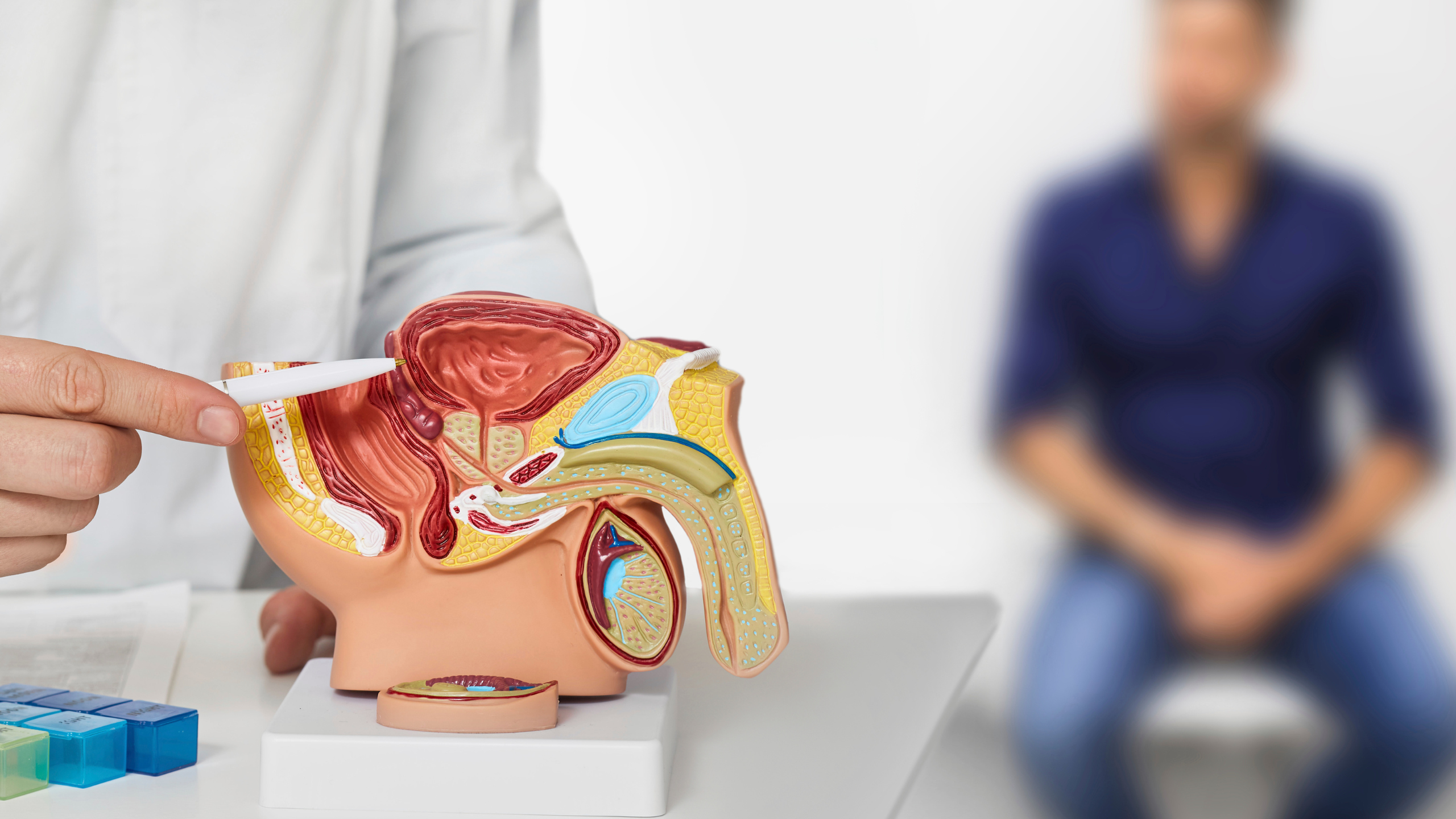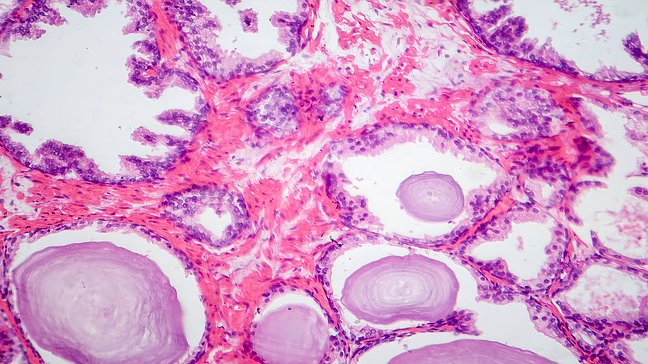
Prostate carcinoma (prostate cancer)
Causes of prostate cancer
The exact causes of the development of prostate cancer are not fully known, but there are several risk factors that can increase the likelihood:
- Age: The risk of developing prostate cancer increases with age, especially after the age of 50.
- Family history: Men with a family history of [prostate cancer](t3://record?identifier=tx_news&uid=42) have an increased risk of developing the disease as well.
- Hormonal influences: An increased testosterone level or increased conversion to dihydrotestosterone (DHT) can promote the growth of prostate cells and thus the risk of prostate cancer.
Symptoms of prostate cancer
Prostate cancer often causes no symptoms in its early stages. In later stages, the following symptoms may occur:
- Weak or interrupted urine flow
- Frequent urination, especially at night (nocturia)
- Pain or burning during urination
- Blood in urine or semen
- Pain in the lower back, hip, or pelvic area (in advanced disease)
Diagnosis of prostate cancer
The diagnosis is made through a combination of physical examinations, imaging techniques, and blood tests. The most common diagnostic methods include:
- Digital Rectal Examination (DRE): The doctor palpates the prostate through the rectum to detect possible hardening or nodules.
- Prostate-Specific Antigen (PSA): A blood test that measures the PSA level. An elevated PSA level may indicate prostate cancer but can also be caused by other prostate issues.
- Prostate Biopsy: A tissue sample of the prostate is taken and examined under a microscope for cancer cells. This is the definitive test for diagnosing prostate cancer.
- Imaging Techniques: In advanced cases, MRI, CT, or bone scintigraphy may be performed to determine the spread of the cancer.
Treatment options for prostate cancer
The treatment of prostate cancer depends on the stage of the disease, the age of the patient, and other factors. The most common treatment options include:
- Active surveillance: For slow-growing cancer, close monitoring may be done, especially in older men without symptoms.
- Surgical removal (prostatectomy): Surgical procedures involve removing the prostate to eliminate the cancer.
- Radiation therapy: External or internal radiation therapy (brachytherapy) can be used to kill cancer cells.
- Hormone therapy: This treatment aims to lower testosterone levels or block the effect of testosterone on the prostate to slow cancer growth.
- Chemotherapy: In advanced or aggressive cases, chemotherapy is used to fight cancer cells throughout the body.
Preventive measures for prostate cancer
There is no specific way to prevent prostate cancer. However, a healthy lifestyle with a balanced diet, regular physical activity, and avoiding risk factors such as smoking can reduce the overall risk of cancer. Regular check-ups, especially from the age of 45 or from the age of 40 with a family history, are crucial for the early detection of prostate cancer.



